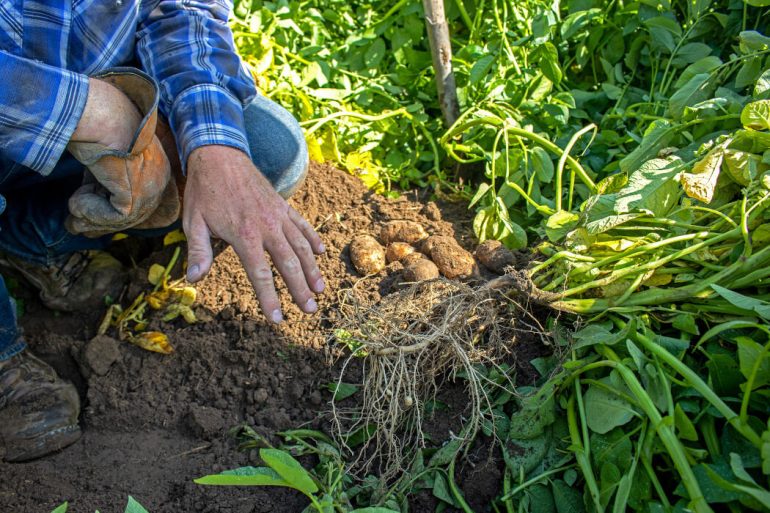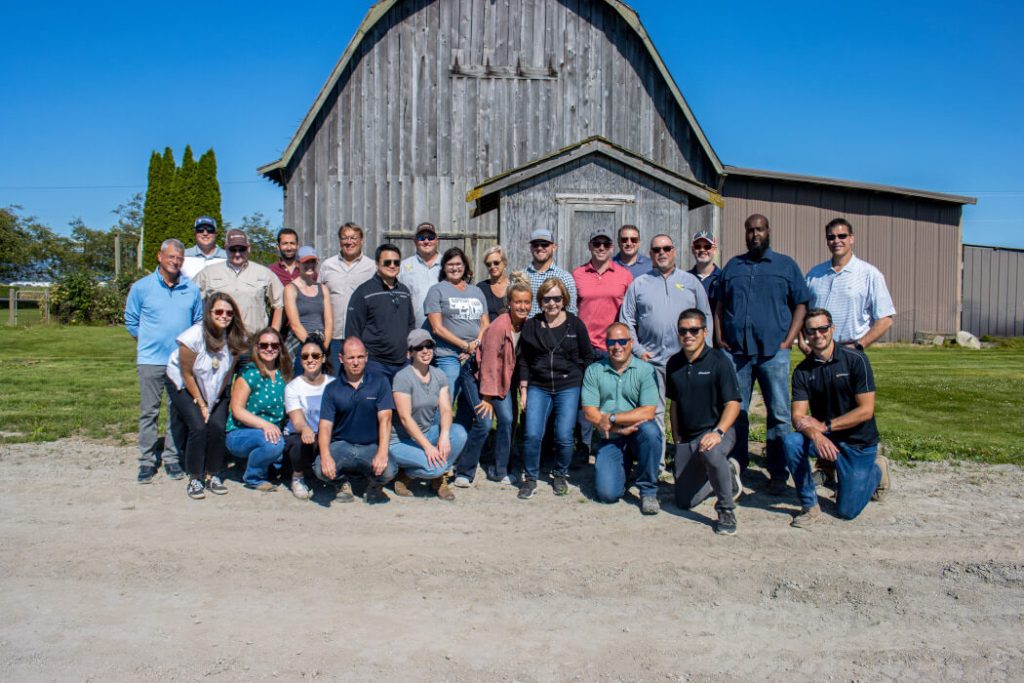Vive Crop Protection co-founder and CEO Darren Anderson believes the Mississauga-based AgTech startup can become agriculture’s “highest velocity innovation engine” on the input side.
He thinks this because Vive doesn’t do discovery and works with existing active ingredients that are synthetic or bio-based. Using precision chemistry, Vive provides United States (US) growers with a wide variety of crop protection products designed to help them use existing agricultural inputs like pesticides, biostimulants, and fertilizers more effectively.
As Vive squares up to compete against major multinational agricultural chemical companies that are well-capitalized but slow-moving, Anderson believes the Canadian firm’s speed and efficiency puts Vive in a strong position to win in this market.
“[Vive is], quite frankly, one of our best, most advanced, and certainly best-managed AgTech companies in Canada.”
-Kyle Scott, Emmertech
“We can innovate and develop new products faster than anyone else,” Anderson told BetaKit in an interview. “We can get products to market in a couple of years for a couple of million bucks, whereas our competitors are all looking at tens to hundreds of millions of dollars and seven to 13 years.”
Through its offerings, Vive aims to help farmers achieve greater yields while also reducing their environmental impact.
After establishing a presence south of the border, Vive has secured nearly $34 million CAD ($26 million USD) in Series C financing to fuel its research and development (R&D) plans and geographic expansion efforts. The startup wants to move into Canada, California, and explore other new markets in Latin America, Asia, and Africa.
Emmertech managing director Kyle Scott described Vive as “a clear leader” in the Canadian AgTech space in terms of both revenue and amount of acres served. “They are, quite frankly, one of our best, most advanced, and certainly best-managed AgTech companies in Canada,” Scott told BetaKit in an interview.
According to Scott, who is joining Vive’s board as part of the round, a big part of what sets Vive apart from its competitors is that the startup is “so fast and so good on the regulatory side” that it can bring new tech to market much faster than other players.
Vive’s Series C round consisted of nearly $21 million CAD in equity capital led by Saskatchewan-based AgTech fund Emmertech, with participation from the European impact and agri-food-focused Cibus funds, and existing investors BDC, EDC, and Urbana Corporation. Vive’s Series C financing also includes about $13 million in debt from Silicon Valley Bank. To date, Vive has raised around $78 million in total equity funding.
RELATED: Emmertech closes $60 million to grow “dominant” Canadian AgTech companies
Anderson described the funding, which closed earlier this month, as the first close of Vive’s Series C round, for which the startup hopes to raise up to another $18 million CAD in equity from agricultural investors in North America and Europe. The CEO called fundraising in this fashion a “prudent decision” given present macroeconomic conditions.
According to Anderson, the company also opted to raise the first close of its Series C round now for two agriculture sector-specific reasons: to help finance inventory investments for next year’s growing season and strengthen its balance sheet heading into the selling season this fall.
Founded in 2006 and spun out of technology developed at the University of Toronto, Vive targets broad-acre row crops like corn, sugar beets, potatoes, cotton, and peanuts—which Anderson claims is unique in the space. According to the CEO, AgTech companies usually start in specialty, higher-margin crops like fruit, vegetables, or wine grapes, “because they have a cost position for their technology.”
Given the scalability and cost-effectiveness of Vive’s technology, the CEO says the startup is able to focus on broad-acre row crops “right out of the gate,” which gives Vive the largest possible market opportunity available.
As Anderson puts it, Vive’s growth over the past 18 months has been “pretty exciting.” The company has begun to see some of its new product investments and field trials focused on new segments start to pay off, and claims to be on a path to bring in over $20 million CAD in revenue this year. The CEO attributes some of this growth to Vive’s distributor and retailer-focused sales strategy, which has enabled the company to see success with a “limited salesforce.”
To date, Vive’s focus has been on the US, which Anderson says has “shorter” regulatory timelines than Canada, and practices an agricultural process that is more common south of the border: applying products with fertilizer in-furrow before planting—when Vive’s core products are designed to be deployed.
Over the next 12 months, Vive plans to expand its sales and marketing efforts in the US, and start selling in Canada, where it currently has a product awaiting regulatory approval.
Emmertech hopes to help Vive build its presence in Canada by brokering partnerships between the startup and the agriculture sector LPs that have invested in Emmertech’s $60 million CAD AgTech Fund.
On the product development side, Vive aims to expand what it is doing on the biological side by combining synthetic and bio-based materials.
Anderson’s broader vision for Vive involves constructing an engine that allows the startup to launch five new products per year. To support these efforts, Vive plans to build out a microbiology facility at its Toronto office staffed with at least 12 new employees.
RELATED: Semios secures $100 million to further acquisition strategy, become global AgTech leader
The startup currently has about 50 employees, and plans to add at least 40 more over the next 12 months to support its growth strategy, which also involves some mergers and acquisitions (M&A).
According to Anderson, there are a lot of early-stage companies in Vive’s sector, particularly on the bio-based input side, that have yet to develop a path to market.
“Our space is pretty highly fragmented,” said Anderson. “Our current plan is that we’re going to be pretty active on the M&A side and really be looking for targets that might be an interesting fit inside our business.”
While Vive isn’t profitable yet, Anderson says profitability is in view, noting that if Vive does a good job executing on this round, the company will reach positive cash flow from operations.
Anderson’s vision for Vive involves launching five new products per year.
According to Anderson, Vive managed to grow during COVID-19 and hasn’t needed to lay off any staff, slow or freeze hiring amid the market downturn. As other industries contend with rising inflation, the CEO said agriculture commodity prices have remained “quite strong,” and is confident that this will continue to be the case.
As farmers and regulators become more conscious of the environmental impact of pesticide use, Scott believes Vive, which helps limit the amount required, stands to benefit from “significant tailwinds.” From a regulatory standpoint, Scott thinks Vive is particularly well-positioned to succeed given that its product suite caters to a wide variety of different pesticides, limiting the potential impact of any one of its products being regulated away.
Given the regulated nature of the industry Vive serves and the time it takes to build trust among farmers, Anderson isn’t concerned about other companies building delivery tech that enables growers to use inputs more effectively.
As Scott puts it, farmer trust is “incredibly hard to build.” Given that farmers typically plant either a significant portion or all of their net worth each growing season, the margin for error in agriculture in terms of adopting new tech is particularly thin.
According to Scott, Vive’s team has been putting in the hard work to win over farmers for more than a decade, and the results are starting to show. “They’re going to be a 15-year overnight success,” he said.
Feature image courtesy Vive Crop Protection.



